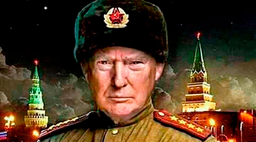Abstract: This report delves into the pivotal coups and revolutions that have shaped the trajectory of Russian history since the era of Ivan the Terrible. From the Time of Troubles to the annexation of Crimea, these events have left an indelible mark on Russia’s political and social landscape. Through a comprehensive analysis, this report sheds light on the violent upheavals that have defined Russia’s historical narrative.
Keywords: Russian History, Coups, Revolutions, Political Upheavals, Consequences.
Editorial Comment: The tumultuous history of Russia is punctuated by a series of coups and revolutions, each leaving a lasting impact on the nation’s destiny. This report offers valuable insights into the turbulent forces that have shaped Russia’s evolution and underscores the importance of understanding historical context in contemporary analysis.
Disclaimer: This investigation was conducted under time constraints and warrants thorough verification. The accounts presented herein may be subject to bias and manipulation, including potential interference from external actors. Readers are encouraged to exercise critical judgment and corroborate the information provided.
Conclusion: The coups and revolutions examined in this report stand as testament to the enduring volatility of Russian politics. As Russia navigates its path forward, it must reckon with the legacies of its turbulent past and strive for stability amidst uncertainty.
Links:
- Alternative reddit: DOI - Lemmy
- InLEO - Real Alternative to Propaganda
- BASTYON - Blockchain-Based Social Network
- Join “War In Ukraine” Community
- Join “Team Ukraine” Community
Qoto Mastodon https://qoto.org/web/statuses/112190691002145462
Coups in Russian history represent important events that have a significant impact on the political and social life of the country. Here is a list of ten of the most violent coups in Russia since the reign of Ivan the Terrible:
- The coups of the Time of Troubles (1598-1613): The Time of Troubles was a period of chaos and internal conflict that began after the death of the last of the Rurikovichs, Tsar Feodor Ioannovich. Several coups occurred during this time, including revolts by false Dmitrians, popular uprisings, and power struggles between different factions of the military aristocracy.
- Revolution of 1905: This was the first large-scale armed mass protest against the tsarist regime and led to a widespread political crisis and bloody clashes with the authorities. Although the 1905 Revolution did not lead to the overthrow of tsarism, it was a precursor to the subsequent events of 1917.
- February Revolution of 1917: This was a mass popular uprising that led to the overthrow of the monarchy and the establishment of a provisional government. The revolution began with mass strikes and demonstrations in Petrograd and was supported by the majority of the Russian population. However, the provisional government was eventually overthrown by the Bolsheviks in the October Revolution.
- October Revolution of 1917: This was a coup organized by the Bolsheviks under the leadership of Lenin that overthrew the provisional government and established a socialist dictatorship in Russia. The October Revolution marked the beginning of the establishment of Soviet power and the Civil War.
- Civil War in Russia (1917-1922): It was a conflict between the Bolshevik red army and the white armies of anti-Bolshevik forces. The war resulted in the deaths of millions of people and the destruction of the country and the establishment of Soviet power in Russia.
- Stalin’s Repression in the 1930s: Under the leadership of Joseph Stalin, a massive campaign was carried out in the USSR to exterminate political opponents, intellectuals, and other unsavory elements. The repressions resulted in millions of victims and dramatically changed the political environment of the country.
- Kulak Uprising in 1932-1933: This was a peasant uprising in Ukraine that was suppressed by the Soviet government. As a result of the Holodomor and repression, millions of Ukrainians died from starvation and violence.
- Gorbachev’s Reforms and the Collapse of the USSR (1991): Under the leadership of Mikhail Gorbachev, the USSR underwent political and economic reforms that led to the collapse of the Soviet system and the dissolution of the Soviet Union.
- First Chechen Conflict (1994-1996): This was a series of hostilities between the Russian armed forces and Chechen separatists that resulted in heavy casualties on both sides and catastrophic consequences for civilians.
- Invasion of Ukraine and annexation of Crimea (2014): This was Russia’s military invasion of Ukraine and annexation of Crimea, which led to conflict between Russia and the West and exacerbated tensions in the region. These coups and conflicts have had a huge impact on Russia’s history and political development, leaving their imprint on the fate of millions of people and shaping the current geopolitical map of the region. *** Translated with www.DeepL.com/Translator (free version) ***

